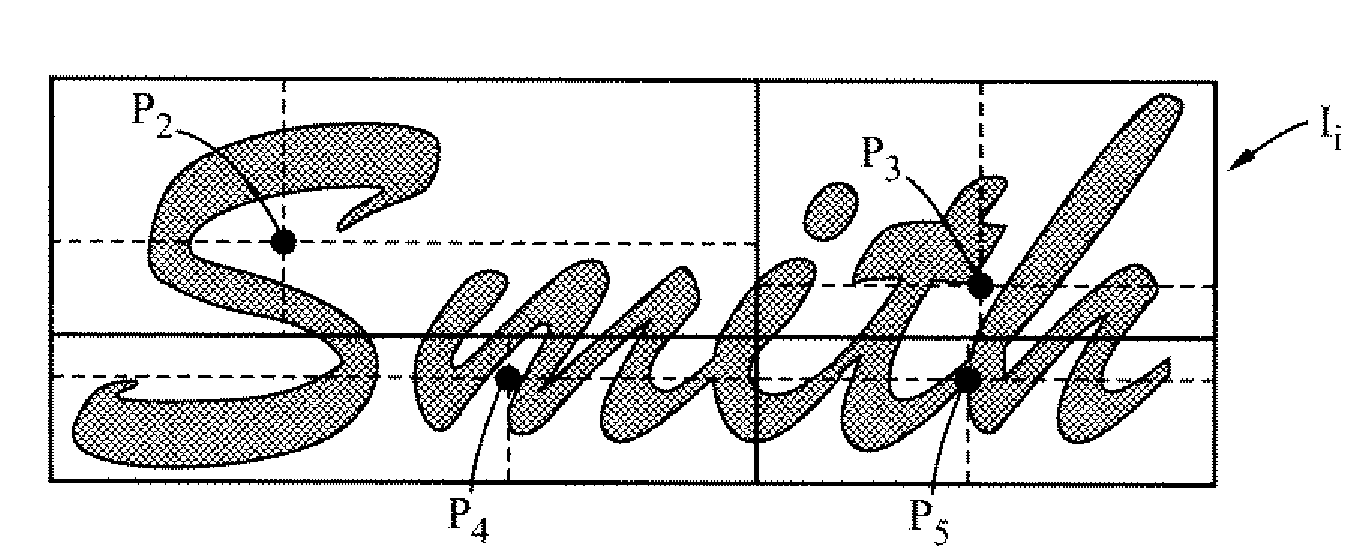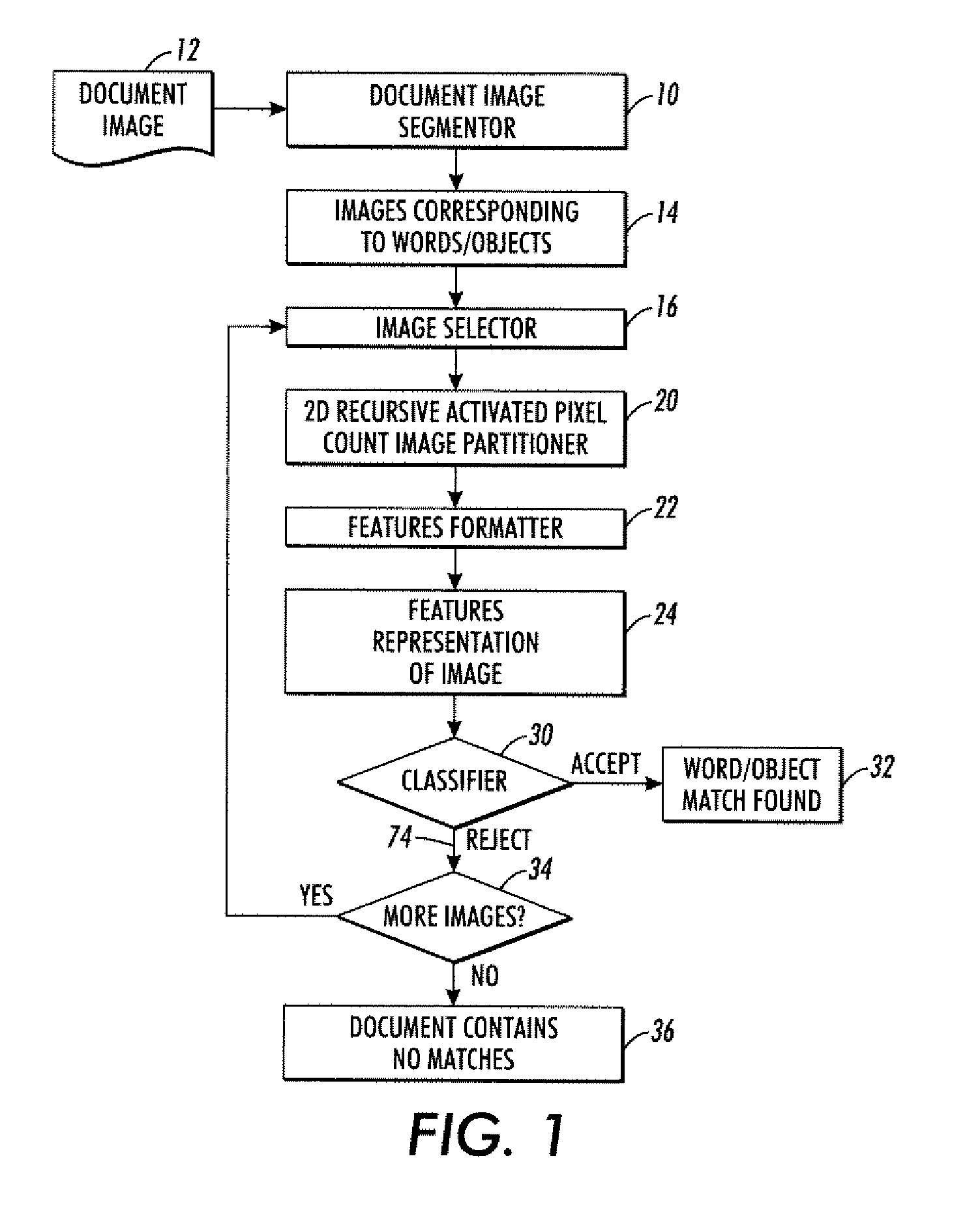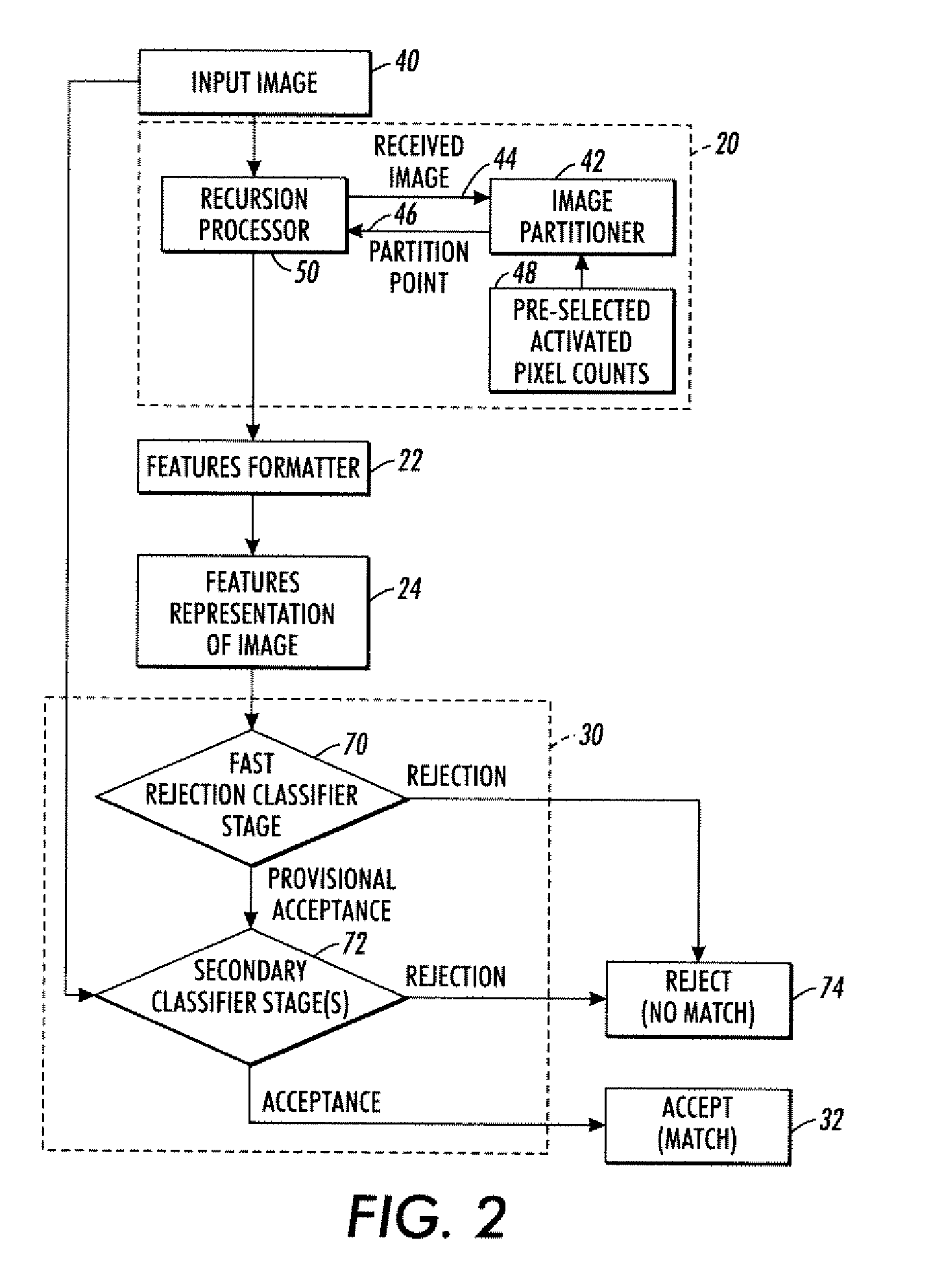Features generation and spotting methods and systems using same
a technology of feature generation and feature detection, applied in the field of image processing, analysis, classification, comparison, detection, can solve the problems of irrevocably losing, low false rejection rate, computationally intensive and sensitive to image quality,
- Summary
- Abstract
- Description
- Claims
- Application Information
AI Technical Summary
Benefits of technology
Problems solved by technology
Method used
Image
Examples
Embodiment Construction
[0017]With reference to FIG. 1, an illustrative spotting system includes a document image segmentor 10 that segments a document 12 in image form based on whitespaces or other criteria to extract images 14 corresponding to words or other objects in the document 12. The document image segmentor 10 operates in image space, and its operation generally does not entail OCR. The document image 12 may have been generated or acquired by optical scanning, by a digital camera, by software that outputs textual content in an image format, or so forth. An image selector 16 selects one of the images 14 for processing. In some embodiments, the image selector 16 may perform additionally perform selected image pre-processing, such as converting the image to a gradient image, adjusting resolution, performing pixel value inversion (e.g., to convert a negative image to a positive image), converting from RGB or another color system to a grayscale representation, or so forth.
[0018]A two-dimensional recurs...
PUM
 Login to View More
Login to View More Abstract
Description
Claims
Application Information
 Login to View More
Login to View More - R&D
- Intellectual Property
- Life Sciences
- Materials
- Tech Scout
- Unparalleled Data Quality
- Higher Quality Content
- 60% Fewer Hallucinations
Browse by: Latest US Patents, China's latest patents, Technical Efficacy Thesaurus, Application Domain, Technology Topic, Popular Technical Reports.
© 2025 PatSnap. All rights reserved.Legal|Privacy policy|Modern Slavery Act Transparency Statement|Sitemap|About US| Contact US: help@patsnap.com



